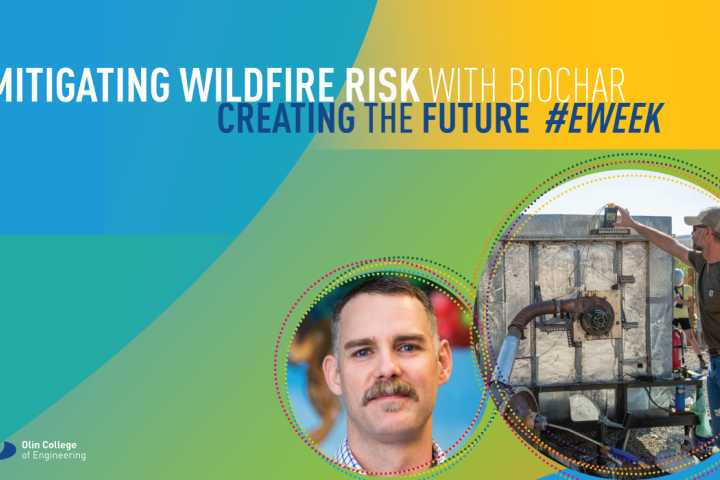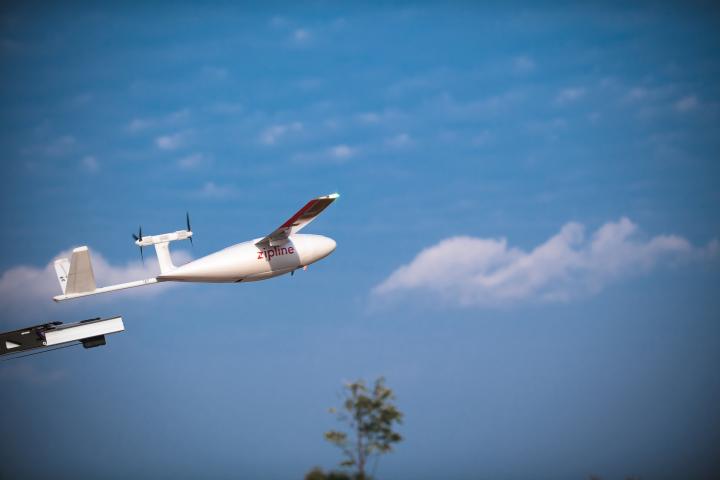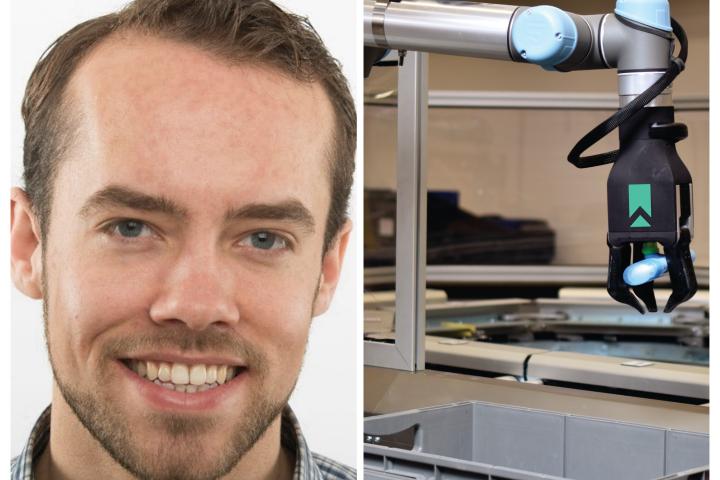STORY: On this Earth Day, Meet Four Alumni Working to Solve Key Ecological Issues and Mobilizing Change
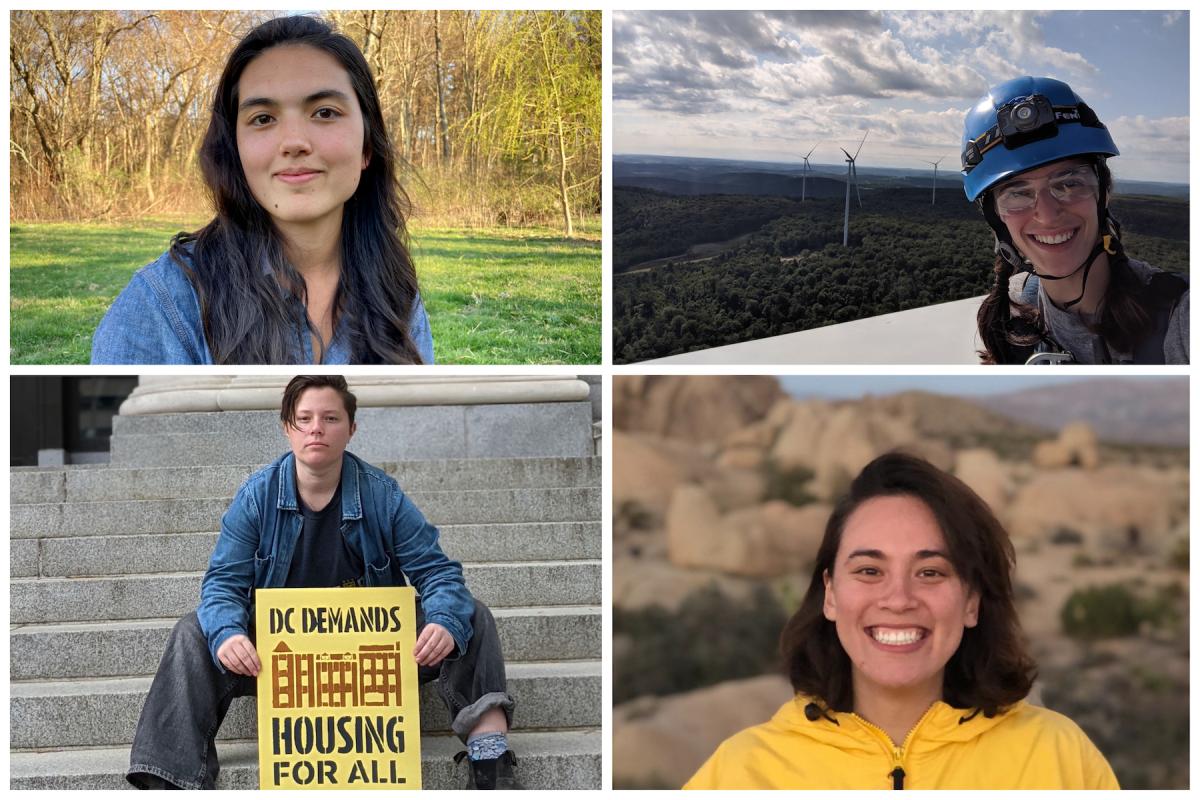
Meet four Olin College alumni working to solve the climate crisis.
(Pictured clockwise): Mariko Thorbecke ‘16, Meg Lidrbauch ‘17, Izzy Harrison ‘18, Alisha Pegan ‘17.
Every year on April 22, Earth Day marks the anniversary of the birth of the modern environmental movement in 1970. On this Earth Day, we're highlighting and celebrating four Olin College alumni who are actively working to solve ecological and environmental issues and mobilizing change.
Keeping with the notable uniqueness of Oliners, Mariko Thorbecke ‘16, Izzy Harrison ‘18, Meg Lidrbauch ‘17, and Alisha Pegan ‘17, are each passionate about and working to solve different aspects of the larger, ecological crisis. But they're also all connected by a common thread, a long-standing dedication to positive change, justice and the sustainability of the planet.
Whether it's working at the intersections of regenerative agriculture, climate change, and Life Cycle Assessment (LCA), being at home in the spaces of climate justice, public space and community, designing powerful and efficient wind turbines as a source of renewable energy, or analyzing energy data to support partners in accessing the distributed energy market, these four Olin alumni are making big impacts in myriad ways.
Read on to see how.
Mariko Thorbecke (E:Environmental Engineering ‘16)
- Climate & Agricultural Consultant, Farmer, Transforming Agriculture
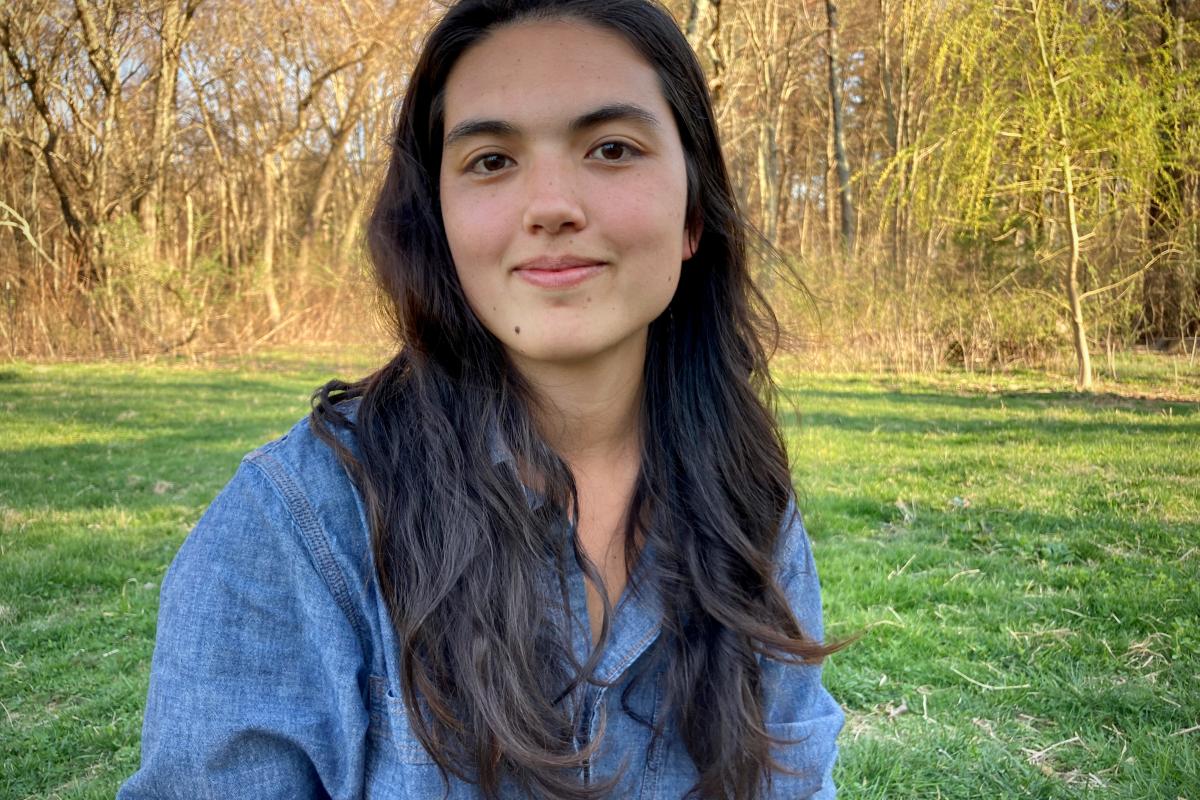
Pictured: Mariko Thorbecke '16.
Mariko Thorbecke '16 is currently working in sustainability consulting, creating a bridge between corporate climate, net-zero commitments and regenerative agriculture, while also running a backyard farm, big on fossil-free growing, dairy goats, chickens, ducks, and lots of plants.
"In many ways climate change is not a carbon problem, it's a social justice problem," says Mariko Thorbecke '16.
First working at a number of sustainability-focused consulting firms in the years after graduating, Thorbecke has since decided to define career success on her own terms, and now works for herself as a climate and agricultural consultant.
"My work focuses on the intersection of Life Cycle Assessment (LCA), climate change, and agriculture," Thorbecke says. What that means in practice is that Thorbecke helps companies to understand the carbon footprint of agriculture, what is behind the carbon models, and what steps need to be taken to align agriculture with a future compatible with the global goal of limiting warming to below 1.5C.
"I am fascinated by the amount of contradictory information that exists related to climate change and agriculture. Every headline and every article seem to say something different."
That's where Thorbecke's passion, expertise and ability to translate arcane details into clear steps forward really shines, transforming agriculture into resilient systems. Systems that improve farmer livelihoods while also adapting to and mitigating the impacts of climate change.
One example of this need for subject experts like Thorbecke is in interpreting the LCA, the main tool used to estimate the carbon footprint and other environmental impact. It has limitations according to Thorbecke, especially when it comes to representing biological systems such as agriculture, that are often not well understood or communicated by the people wielding the tools. Thorbecke's objective is to help provide clarity on these complex topics.
"We have a global goal to limit temperature rise below 1.5C. People don’t realize that achieving that goal would require “rapid, far-reaching, and unprecedented changes to all aspects of society” according to the IPCC. This is not a “switch to reusable shopping bags” and pat ourselves on the back goal. This is a phase out the entire fossil fuel industry level change."
While that change is difficult - we currently live in a world built on the extraction of fossil carbon, where fossil fuel investors can sue over lost profits - it's vital, says Thorbecke.
"Major suffering has occurred from the extraction and burning of fossil fuels. In many ways climate change is not a carbon problem, it's a social justice problem."
But if there is one thing Thorbecke can count on to inspire and guide her in the challenge, it's "the return of each season and that time moves quickly. Time to stop, smell the flowers, and admire the pollinators hard at work."
Listen to Thorbecke talk about the importance of fossil-free farming while a guest on the Investing in Regenerative Agriculture and Food podcast.
Izzy Harrison (E:Human-Centered Design '18)
- Visual Strategy Lead, Trainer, Using Art and Creativity to Fight for Climate Justice
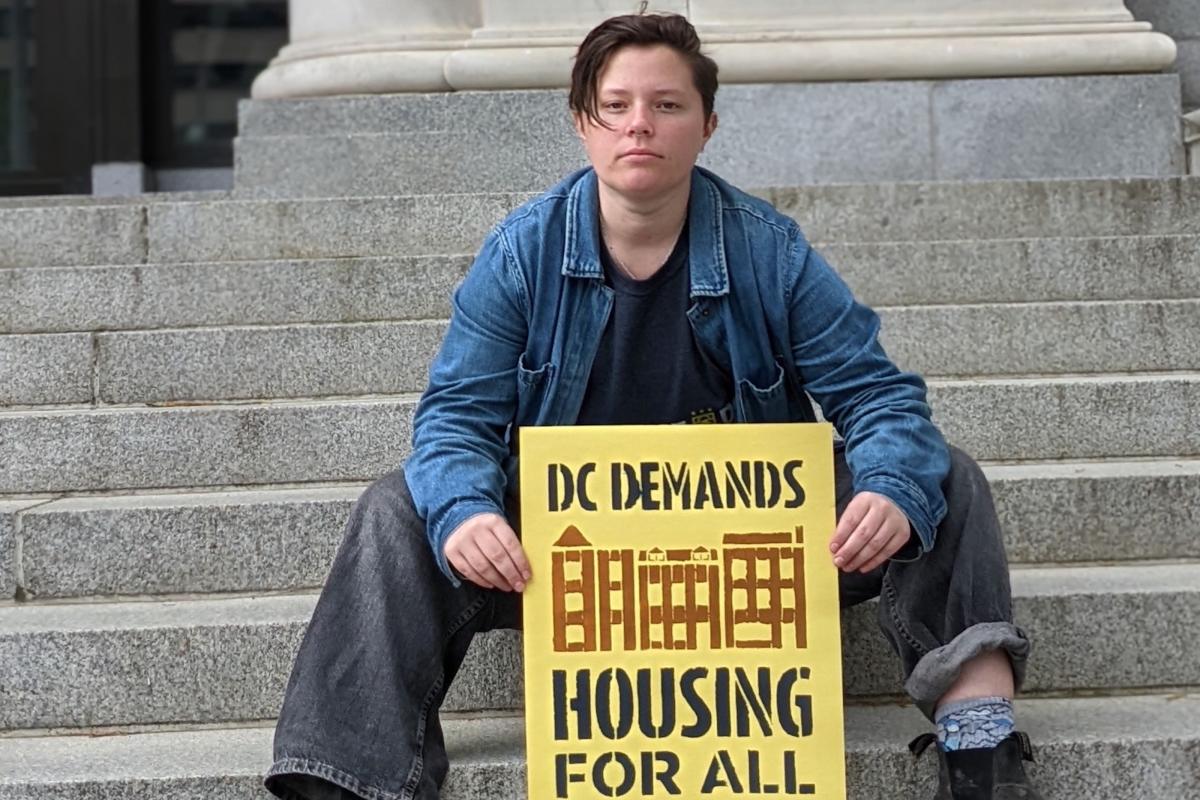
Pictured: Izzy Harrison '18.
Izzy Harrison '18 is back in their hometown of Santa Cruz, California, fighting for climate justice with the Sunrise Movement by training young leaders to leverage visual strategy to sharpen their local campaigns.
"While at Olin, I really focused on communication design, and it has prepared me well for my current role at Sunrise! It's often finding the simplest way to communicate complex concepts, as well as doing a lot of hands-on teamwork to bring our vision to life," says Izzy Harrison '18.
Harrison is the visual strategy lead for The Sunrise Movement, working on the trainings team. Sunrise is a youth movement to stop climate change and create millions of good jobs in the process. As their website says, they're "building an army of young people to make climate change an urgent priority across America."
This is done in part by organizing hubs and chapters across the country, running multi-year or shorter campaigns - with all, no matter their duration, needing visual coherence and fidelity to make the most impact on stopping climate change.
“Visual strategy," according to Harrison is a simple way to say, “using art and creativity to make strategy visible.”
"It’s our banners and signs at actions, our merch, public art, yard signs, canvassing materials, social media content, videos, etc. By coordinating our visuals and making thoughtful choices together, we take control of the images we use to communicate ourselves to the public," says Harrison.
Harrison also says that they are focused on supporting volunteer leaders all across the country to develop the skills to do this important work.
How this visual strategy shakes out in practice is first by training people in the following skills to prepare them for their projects:
- Principles of design
- Messaging strategy
- Graphic design software
Then teaching them how to execute and bring the projects to life, which involves learning how to cut stencils, trace and paint banners. A lot of the time the work is remote, but Harrison has lots of great opportunities to also teach people in person - including high school students.
"This summer we are leading a two-week summer camp for our high school program, and I'm going to get to teach hundreds of high schoolers how to paint banners and stencil signs that they will take home and use for their campaigns in the fall," says Harrison.
When asked why they are in the fight, Harrison shared a poignant story that shows just how close the climate crisis is to us all.
"I'm fighting for the place I call home. I grew up in a small beach town where from a young age the power that the climate had over our day-to-day lives was abundantly clear," says Harrison.
"I grew up in a decades long drought, and then just recently moved back home - to a winter with record breaking storms that washed out roads to our friends' houses, flooding, and now a road near my house is literally falling into the ocean."
Learn more about the Sunrise Movement.
Meg Lidrbauch (Engineering ‘17)
- Senior Engineer, Designing More Efficient Wind Turbines
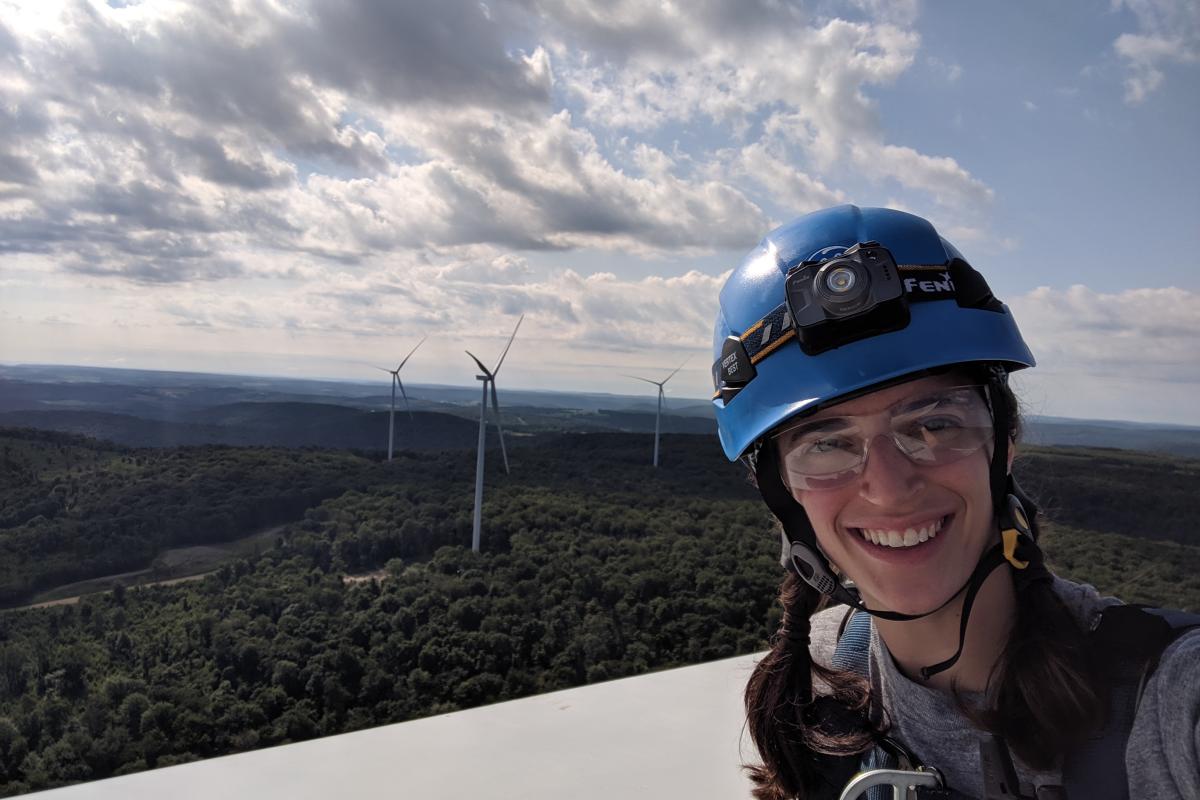
Pictured: Meg Lidrbauch '17 in 2019 on top of what was at that time, the tallest turbines in the country (~131m hub height).
Meg Lidrbauch '17 recently finished up a two-year gig at Vestas as a siting engineer, where she helped to minimize society's impact on the environment through her work to responsibly develop offshore wind solutions. Lidrbauch is now at Gulf Wind Technology (GWT) helping to solve one of the toughest engineering questions in the industry.
"Wind energy is still the ‘new kid on the block’, with a little more than 40 years of know-how of turning the kinetic energy of the wind into electricity. While the overall form of turbines hasn’t changed much in that time (three blades attached to a powertrain which sits on top of a tower), the finesse of the design has changed drastically," says Meg Lidrbauch '17.
An early desire to make a positive impact, dedication to the environment and an interest in engineering, put Lidrbauch on the path she's still traveling today.
"The climate crisis has been my guiding light for my life since high school. Not knowing what career to pursue but knowing that I cared about the environment and sustainability and wanted to make a positive impact on the world - combined with decent performance in math and science - led me to study engineering in college," says Lidrbauch.
"What brought me to Olin in particular was a sense of belonging and a unique, hands-on, collaborative education where I could pursue my passions."
After graduating, Lidrbauch still didn’t know exactly what she wanted to do, but a chance encounter at a job fair led her to pursue the Renewable Energy Development Program at GE Renewable Energy.
"This program opened my eyes to one pathway of what working in a sustainable industry could look like. Wind energy is still the ‘new kid on the block’, with a little more than 40 years of know-how of turning the kinetic energy of the wind into electricity. While the overall form of turbines hasn’t changed much in that time (three blades attached to a powertrain which sits on top of a tower), the finesse of the design has changed drastically."
This technical sophistication makes it a fast-paced industry where the main engineering questions according to Lidrbauch, are: “How can we eke more performance out of this thing, at less cost, while maintaining or improving upon safety, quality, and reliability?”
Lidrbauch has enjoyed having the opportunity to work on these complex questions throughout her career. First at GE as a system loads engineer for onshore wind turbines, then at Vestas as a siting engineer for offshore behemoths.
"And now, I'm at Gulf Wind where I'm helping to solve one of the toughest engineering questions in the industry: 'How do we make a turbine that can withstand hurricanes in the Gulf of Mexico, while being economical for the region’s moderate wind speeds and low electricity prices?'"
Lidrbauch has traveled a good distance since her high school days of ‘2+2 = engineering!’ and her mid-college career plan of becoming a sustainability consultant.
"I have worked in much more technical positions than I ever thought myself capable of - and I excelled. Not only that, but I love working on the tough problems, knowing that answering them will help provide a solution to the problem the global community is facing: 'How are we going to avoid the worst effects of the climate crisis?'"
With all of the economic, political, social, and other dire issues we hear about in the news each day, it can become overwhelming. What can we as individuals really do? During these quiet moments, Lidrbauch searches for and locates the beacon that's helped to guide her all of these years - and then gets down to work.
"I try to come back to my guiding light: the climate crisis, and the role I'm playing in helping to mitigate it. Because if we can’t solve this, nothing else will matter," says Lidrbauch.
Alisha Pegan (E:Design ‘17)
- Senior Data Analyst, Analyzing Energy Data, Working on Renewable Energy Systems
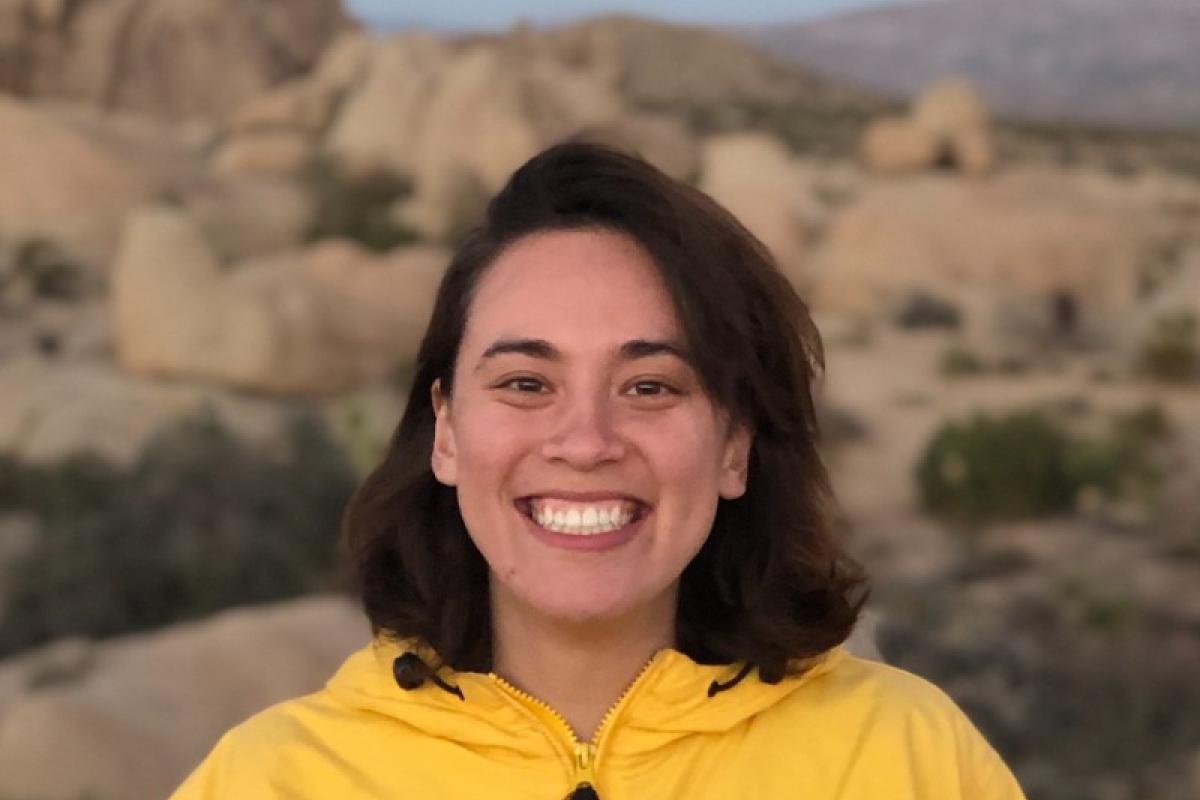
Pictured: Alisha Pegan '17.
Alisha Pegan '17 is analyzing energy data and streamlining processes at Leap to support residential and commercial companies in accessing the distributed energy market.
"Our energy system is the main cause for climate change, and therefore the biggest opportunity to transform how we operate," says Alisha Pegan '17.
Pegan works as a data analyst for Leap - a company that aims to decarbonize the world's electric grid by using software that can aggregate energy assets into flexible resources. What does that all mean and importantly, how do these adaptable resources help to impact climate change and the overall ecological picture?
Ideally, by facilitating easy, automated access (through the software) to high-value grid services revenue streams for providers of batteries, electric vehicle charging, smart thermostats, and other flexible assets, it helps to unlock and accelerate the transition from the current state of the energy system to a more flexible, resilient energy grid powered by renewable resources.
Pegan, just like her fellow Olin alums featured in this article, is skilled at examining and analyzing the full range of complex details found in this system and putting the pieces together.
"In my role, I focus on how we are doing, are we delivering the energy or capacity we hoped to? Why or why not? It is a giant jigsaw puzzle with many moving pieces. It is both fascinating and fulfilling.”
Pegan is drawn to the industry and the work because of the great opportunity for change it presents.
"Our energy system is the main cause for climate change, and therefore the biggest opportunity to transform how we operate. By measuring what is important, the energy or carbon we are displacing, then I can better understand the effective levers for affecting change on a large scale."
Moving forward, Pegan hopes to deepen her skills on identifying evidence-based climate solutions and enable others with the information to enact them, while approaching it with a Just Transition pragmatism.
Find more info here on Earth Day 2023 and how you can get involved.
